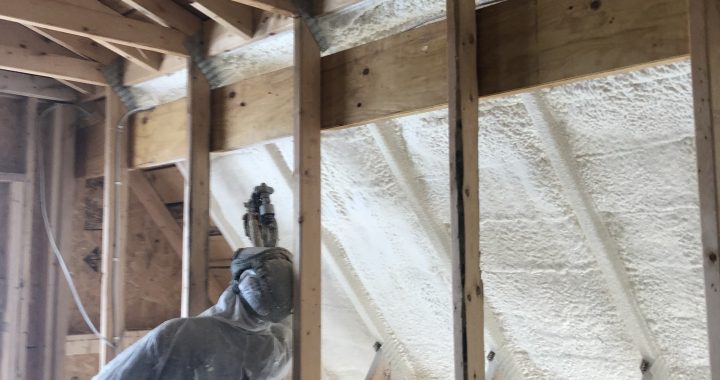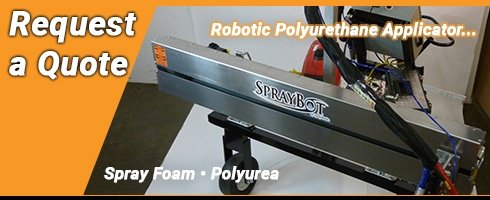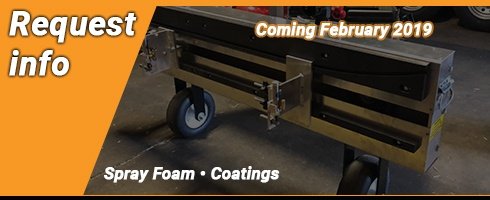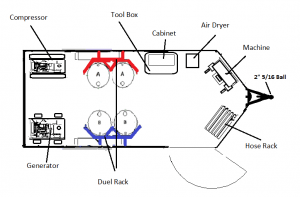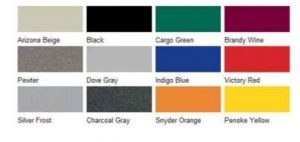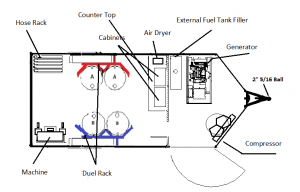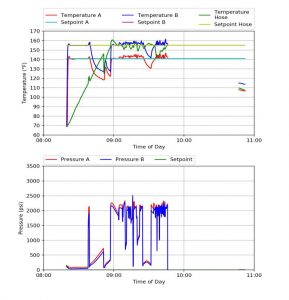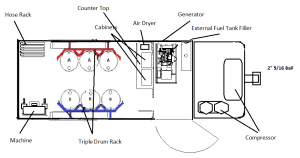When it comes to finding a spray foam that is durable, efficient, and compliant with the new HFC rules that are being enacted throughout the U.S., SprayWorks Equipment is ready to supply you with quality products that adhere to these standards.
Continue readingCategory Archives: Material
The Benefits of Polyurea Coatings
Polyurea coatings are used to prolong the lifespan of structures by providing them with qualities that result in reduced repairs and replacements. They do this by adding a waterproof and weatherproof seal that increases durability and longevity.
Continue readingSprayWorks Conducts Spray Foam Testing on Behalf of Natural Polymers
SprayWorks Equipment recently worked with Natural Polymers to test spray foam materials from across the country. The application portion of the test was conducted at the SprayWorks Equipment facility in Kent, Ohio. After Owens Corning’s 2022 acquisition of Natural Polymers, an Illinois-based spray foam manufacturer, the company sought a location to carry out customer focused learnings.
Continue readingSprayWorks Begins Offering HFO Foam to Support Contractors with HFC Compliance
SprayWorks Equipment recently began offering foam containing hydrofluoroolefin (HFO). Many states now require spray foam applicators to use closed cell foam that does not contain hydrofluorocarbon (HFC).
Continue readingCan Spray Foam Insulation Be Applied in Cold Weather?
How cold is too cold for spray foam?
Depending on the type of spray foam used, processing temperatures are typically between 60-90º inside the barrel. For substrate temperatures, roofing is generally 45-180º, while interior foam can be applied from sub-zero temperatures all the way up past 100º.
If you are working in a colder environment, alternate low temperature spray foam that is designed as a winter blend, will be required. Cold weather spray foam is specially formulated to have a faster reaction time, preventing delimitation from the substrate. Open cell foam is not capable of being winter blend spray foam insulation, only closed cell foam. While open cell doesn’t have a winter blend, with a flash coating of 1/8 inch to ¼ inch, it can be sprayed on substrates down to about 10 degrees.
Continue readingNeed Spray Foam for Wall Insulation? SprayWorks Equipment Has You Covered
At SprayWorks Equipment, we offer spray foam for walls that meets the needs and applications for any project. With over 100 years of combined industry experience, we are the leading full-service manufacturer and supplier of cost-effective polyurethane products and spray foam insulation across the United States.
Continue readingHow to Understand Spray Foam Insulation And How It’s Used
One of the most basic human needs is temperature management. We use it in most walks of life, specifically when it comes to the preservation of heat or cold inside our homes, coolers, refrigerators, ovens, stores, cars, and many other everyday applications. With the ability to retain desired temperatures in particular situations, science and ingenuity are tasked with figuring out methodologies by which temperature control can help various aspects ranging from reduction of the greenhouse effect, energy savings, and cost reduction for various means for owners of businesses and residential properties.
Continue readingHow to Reduce Pocketing in Studs
Preventing pocketing is an important step in properly applying spray foam. Study the material manufacturer’s manual and take the proper steps to prepare your area before spraying foam. If the proper steps are taken for preparation, you will save time from preventing issues from occurring.
For the best application, first reference the material manufacturer’s manual. Do not exceed the total thickness acceptable in a single pass and allow the material to cure in between passes (typically about 10-15 minutes). Follow these steps to eliminate pocketing on your project.
Continue readingHow to Choose the Right Concrete Lifting Equipment?
Historically, concrete lifting has been its own niche area – until recent years, when expanding foam for concrete leveling has become available. Here, we explore the various options of concrete lifting equipment as it relates to spray foam.
Continue readingFrost Bitten Profits
Cold weather spray foam applications can prove to be very challenging. What works in the spring, summer and fall is twice as challenging when weather conditions are cold. Unless you are aware of problems that could arise and how to avoid them, trouble may follow.
Continue reading
